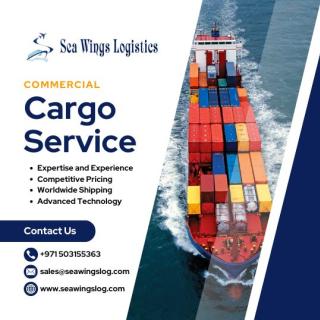The Cargo Inspection Market: Enhancing Global Trade
Security and Efficiency
The Cargo
Inspection Market is experiencing steady growth, driven by the
increasing need for security, compliance, and operational efficiency in global
trade and transportation. With the market valued at $3.4 billion in 2023,
it is projected to grow from $3.8 billion in 2024 to $5.12
billion by 2032, reflecting a CAGR of 3.8% during the
forecast period (2024-2032).
Key Market Drivers
- Rising
Trade Volumes
As global trade volumes continue to grow, the need for cargo inspection technologies has become increasingly critical. Ensuring the safety of goods in transit, as well as compliance with international trade regulations, remains a priority for governments, customs authorities, and supply chain companies. - Heightened
Security Concerns
The growing threat of terrorism, smuggling, and illicit trade has significantly increased the demand for advanced cargo inspection systems. Technologies such as X-ray scanners, nuclear-based detection, and advanced imaging systems help prevent the entry of dangerous or illegal goods into supply chains. - Regulatory
Compliance
Stringent regulatory frameworks governing the import and export of goods are pushing businesses to adopt comprehensive cargo inspection solutions. Customs and border agencies around the world are increasingly implementing mandatory cargo screening procedures to protect national security and ensure compliance with global trade standards. - Technological
Advancements
The development of more sophisticated, automated, and faster inspection technologies has helped streamline cargo inspections, reducing human intervention and increasing inspection throughput. New innovations in automation, AI, and machine learning are improving the accuracy and efficiency of cargo inspections. - Expansion
of E-commerce
The rapid growth of e-commerce and the shift toward global online shopping are increasing the volume of parcels and shipments being processed daily. This surge in shipments, especially across international borders, requires efficient and secure inspection systems to maintain safety and ensure regulatory compliance.
Challenges in the Market
- High
Initial Investment
The implementation of advanced cargo inspection systems requires significant upfront capital investment. The cost of equipment such as X-ray machines, CT scanners, and radiation detection devices can be prohibitive, especially for smaller ports and logistics centers. - Operational
Complexity
While automated systems improve efficiency, they can be complex to operate and require skilled personnel for maintenance and troubleshooting. Balancing automation with human oversight remains a challenge for many logistics operators. - Privacy
Concerns
Cargo inspection systems that utilize advanced imaging and scanning technologies can raise privacy concerns. There are ongoing debates about the use of high-resolution imaging systems, especially in regions where goods and personal items may be subject to thorough scans. - Backlog
and Bottlenecks
In areas with high traffic, such as major ports or customs entry points, the volume of goods waiting for inspection can create backlogs and operational bottlenecks. Delays in inspection can result in long waiting times, which affects the efficiency of the supply chain.
Emerging Opportunities
- Growth
of Automated and Remote Inspection Technologies
The introduction of remote cargo inspection solutions and automated cargo screening systems are reducing human intervention while increasing speed and accuracy. Such innovations improve throughput, minimize human error, and enhance operational efficiency. - Integration
with Smart Supply Chain Technologies
The integration of cargo inspection systems with IoT (Internet of Things) sensors, blockchain, and AI-powered analytics is transforming the logistics industry. Real-time data and smart tracking allow for more accurate monitoring of shipments and better decision-making throughout the inspection process. - Focus
on Sustainability
As global supply chains seek to become more environmentally friendly, the demand for eco-friendly and low-energy inspection technologies is rising. Green technology solutions in cargo inspection can help address concerns about carbon emissions and environmental impact. - Investment
in Emerging Markets
As international trade grows in Asia-Pacific, Latin America, and Africa, there are vast opportunities for the deployment of cargo inspection technologies in new and expanding markets. Investment in infrastructure and regulatory frameworks in these regions is expected to further boost the market.
Regional Insights
- North
America: The market is driven by regulatory requirements and advanced
technological solutions, with the U.S. leading in cargo inspection
infrastructure.
- Europe:
Strict border security policies, particularly within the EU, are fueling
demand for advanced cargo inspection technologies.
- Asia-Pacific:
The rapidly growing trade volumes and the rise in e-commerce across
countries like China, India, and Japan are major contributors to the market’s
growth in this region.
- Middle
East & Africa: Increasing investments in port infrastructure and
trade facilitation measures are enhancing the demand for cargo inspection
solutions.
Conclusion
The Cargo Inspection Market is on a steady upward
trajectory, driven by the increasing need for security, compliance, and
operational efficiency within global trade networks. As trade volumes continue
to rise, and as new technologies emerge, the cargo inspection market is
expected to experience further growth and innovation. Key players in the
logistics and supply chain industries must embrace advanced cargo inspection
solutions to maintain security, streamline operations, and comply with
international regulations.
Market Overview
- Market
Size (2023): $3.4 billion
- Market
Size (2024): $3.8 billion
- Market
Size (2032): $5.12 billion
- CAGR
(2024-2032): 3.8%








